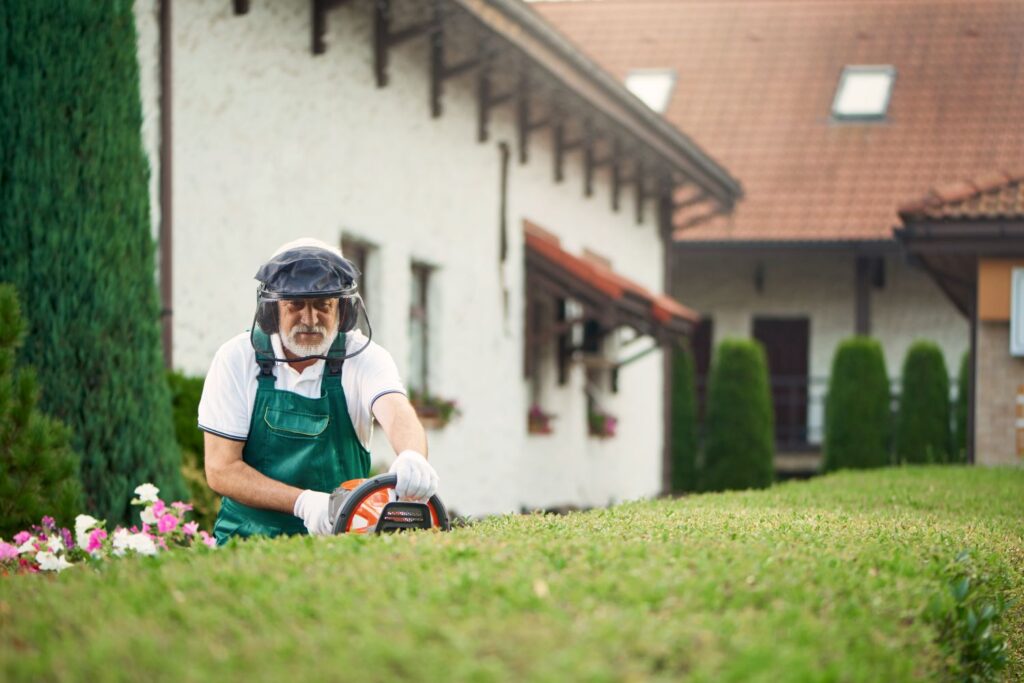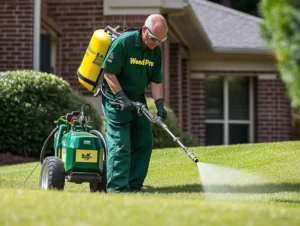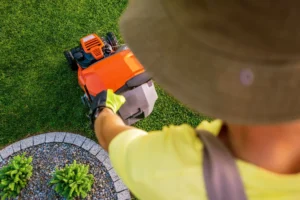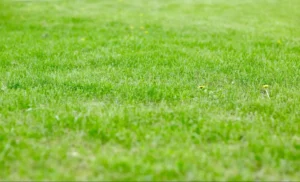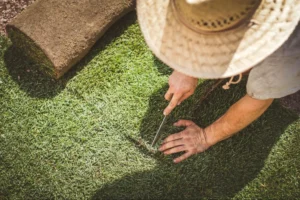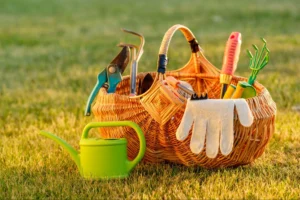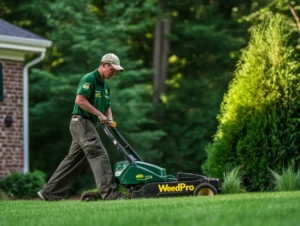Your lawn isn’t just a patch of green—it’s a living, growing, thriving ecosystem. And believe it or not, the key to the best lawn treatment plan starts with understanding what type of grass you actually have. Sounds simple, right? But with so many different kinds of grass—each with their own personalities, quirks, and care requirements—it’s easy to feel like you’re one bad mow away from disaster.
Here in Georgia, your lawn’s success hinges on matching your care strategy to your turf type. Whether you’re rocking Bermuda grass in full sun or dealing with fussy fescue in the shade, the right knowledge can make or break your lawn goals. That’s where Weed Pro comes in.
In this turf-filled guide, we’ll break down the most common types of grass you’ll find in Atlanta and the surrounding areas. We’ll also sprinkle in tips for mowing, fertilizing, watering, and more—so your lawn treatment plan is tailored from the roots up.
Let’s dig into the grass of the matter, shall we?
Why Knowing Your Grass Type Matters for Lawn Treatment
Think of it this way: if your grass could talk, it’d probably have some very specific requests. Some like it short, others need more water. Some thrive in the sun, others melt like ice cream in Georgia’s heat. If you’re giving every yard the same lawn treatment, you’re bound to miss the mark.
Knowing your grass variety helps you:
- Set the right mowing height
- Choose the right fertilizers and seed blend
- Understand water and drought tolerance
- Time your treatments based on seasonal growth cycles
- Adjust care for sun or shade tolerance
In short, your lawn treatment becomes smarter, more efficient, and more effective.
Warm-Season vs. Cool-Season Grasses: The Big Split
Before we go into individual grass kinds, let’s cover the basics. Most lawns fall into one of two main categories:
Warm-Season Grasses
These grasses thrive in the heat and go dormant (aka brown) in the cooler months. Think: Bermuda, Zoysia, Centipede, and St. Augustine.
Cool-Season Grasses
These grasses love the cooler temps of spring and fall but struggle in intense summer heat. You’ll see Tall Fescue and Kentucky Bluegrass in this category—though they’re less common in Georgia unless blended.
Georgia lawns often use warm-season types—or blends—that can handle the state’s intense summers.
Bermuda Grass: The Classic Atlanta Choice
If your lawn looks like a golf course in July, chances are it’s Bermuda grass. It’s fast-growing, sun-loving, and tough as nails.
Best For: Full sun, high-traffic yards
Challenges: Doesn’t tolerate shade well
Care Tips:
- Mow low: 1–1.5 inches
- Requires frequent mowing during summer
- Responds well to nitrogen-rich fertilizer
- Great drought tolerance, but still likes 1 inch of water/week
Pro Tip: If you want thick, fine-textured turf, Bermuda grass is your go-to—but don’t expect it to play nice with your trees. It’s not shade-friendly.
Zoysia Grass: The Fancy (But Fussy) One
Zoysia offers that plush, carpet-like feel underfoot. It’s dense, lovely to look at, and somewhat tolerant of light shade.
Best For: Homeowners who want a lawn with a “wow” factor
Challenges: Slow to green up in spring
Care Tips:
- Mow to 1.5–2 inches
- Needs good drainage and patience
- Handles seasonal growth cycles well but doesn’t love heavy foot traffic
- Prone to thatch buildup
Weed Pro’s Note: If you’re opting for Zoysia maintenance, keep it on a regular lawn treatment schedule to avoid disease buildup and thatch layers.
Tall Fescue: The Cool Customer
Tall Fescue is a popular cool-season grass that can handle the rollercoaster of Georgia weather—provided it’s given shade and water.
Best For: Shaded lawns, transitional zones
Challenges: Struggles in the deep summer heat
Care Tips:
- Mow to 2.5–3.5 inches
- Needs more frequent watering than warm-season types
- Overseed annually for thick growth
- Excellent shade tolerance, but can brown easily in dry spells
Bonus: Fescue’s deep roots make it more drought tolerant than it gets credit for—just don’t skimp on water when things heat up.
Centipede Grass: Low-maintenance, Low-Fuss
Looking for a lawn treatment plan that doesn’t need a ton of fuss? Centipede grass may be your new best friend.
Best For: Low-traffic areas, minimal lawn care
Challenges: Doesn’t like alkaline soil or heavy fertilizer
Care Tips:
- Mow to 1.5–2 inches
- Fertilize lightly—overfeeding causes issues
- Prefers slightly acidic soil
- Not ideal for sports or pets
This grass doesn’t want to be pampered—it just wants to be left alone and occasionally admired.
St. Augustine Grass: The Shade-Loving Socialite
This soft, wide-bladed grass is known for its shade tolerance and rich color. It’s especially common in coastal areas of Georgia.
Best For: Partial shade, Southern charm
Challenges: Prone to disease in wet weather
Care Tips:
- Mow to 2.5–4 inches
- Requires consistent irrigation in summer
- Watch for chinch bugs and fungal infections
- Benefits from regular lawn treatment to maintain vigor
If you’ve got tree-lined streets or want a Southern aesthetic, St. Augustine could be the vibe.
Creeping Grass Types: When Turf Starts to Wander
If you’ve got creeping grass types like Bermuda or Zoysia, you’ll notice they spread via stolons and rhizomes. That means they’re great at filling in bare spots, but they can also sneak into flower beds, walkways, or the neighbor’s yard if left unchecked.
A smart lawn treatment plan includes edging and occasional barrier installation to keep things tidy.
Grass Texture and Turf Goals
Some grasses feel like velvet. Others feel like a straw mat. Texture might sound superficial, but it affects everything from your mowing to your barefoot experience.
When selecting a seed blend guide, consider the following:
- Turf texture (fine vs. coarse)
- Color variation throughout the seasons
- Foot traffic tolerance
- Your desired level of softness
A plush lawn might need more maintenance, while a tougher one could survive soccer games and toddlers.
Seasonal Growth Cycles and Lawn Treatment Timing
Every grass has a rhythm. Some surge in spring, others chill out until summer. Understanding these seasonal growth cycles can help you avoid mistakes like fertilizing at the wrong time or mowing too short.
Weed Pro’s Tip: The best lawn treatment plans in Atlanta sync up with your grass’s natural tendencies. We’re talking timely aeration, proper overseeding, and smart watering plans that follow your turf’s calendar—not your neighbor’s.
Matching Grass Type to Lifestyle
Still not sure which grass kind is best for you? Ask yourself:
- Do I have kids or pets using the yard daily?
- Is my lawn mostly sunny or mostly shaded?
- Do I want something that looks great with minimal care—or am I down for the high-maintenance look?
- Do I want to mow once a week or once a month?
Your lawn treatment strategy will only work if it fits your life.
Let Weed Pro Build Your Perfect Lawn Treatment Plan
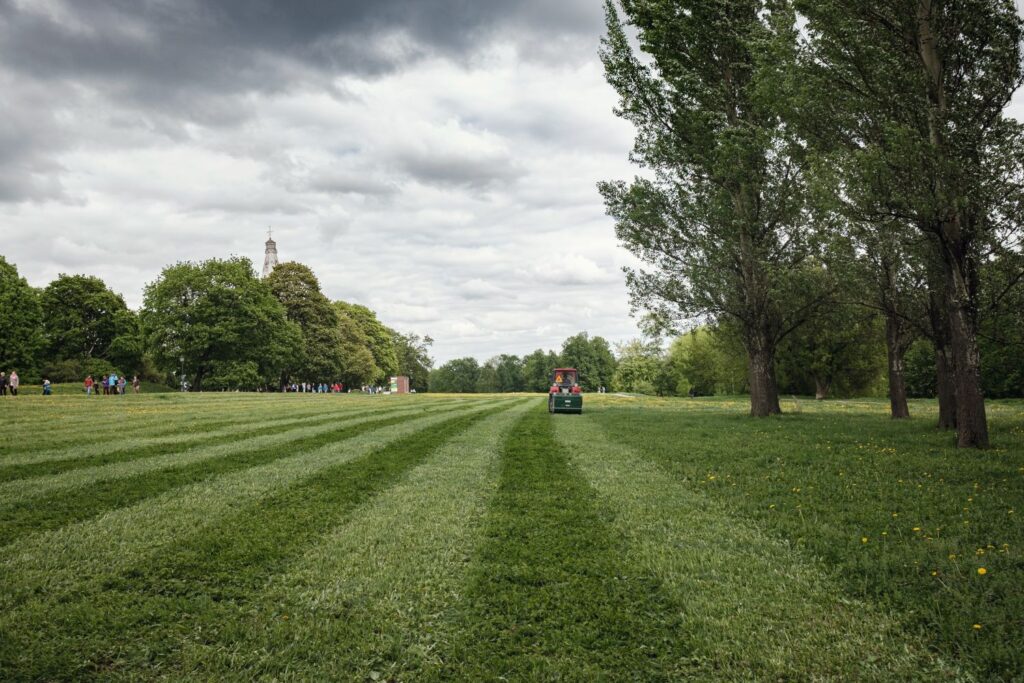
From diagnosis to treatment and everything in between, Weed Pro has the local know-how to keep Atlanta’s lawns healthy and thriving. Not sure what kind of grass you have? We can identify it and tailor your lawn treatment down to the soil. Whether you’re patching bare spots or going full makeover mode, we’ve got your back (and your turf).
FAQ: Grass Questions You Didn’t Think to Ask
Can you grow two types of grass in one lawn?
Yes! In fact, many seed blends intentionally combine grass types to maximize resilience. For example, fescue is often mixed with ryegrass or bluegrass for shade tolerance and better growth year-round. Just make sure their care needs align so one doesn’t dominate the other.
Does the color of your grass mean anything about its health?
Absolutely. Grass that’s pale or yellowing may be lacking nutrients (like nitrogen), or it could be suffering from overwatering or compacted soil. Deep green grass usually indicates proper nutrition and moisture balance—though very dark turf can also be a sign of over-fertilizing.
How do you identify your grass type if you didn’t plant it yourself?
Start with the blade shape, growth pattern (bunching vs. creeping), and texture. Then compare it to images or take a sample to a local lawn care pro—like Weed Pro! We’ll help you ID your turf and build a care plan around it.
🌀 Ready for the Next Step in Your Lawn Game?
Lawn Care Decisions: Bagging vs. Mulching Your Lawn Clippings
Now that you’ve nailed the grass basics, it’s time to learn how mowing impacts your lawn’s health. In our next blog, “Lawn Care Decisions: Bagging vs. Mulching Your Lawn Clippings,“ we’ll walk you through the pros, cons, and surprising facts behind this simple decision. Spoiler alert: it could change your lawn for the better. Don’t miss it!

